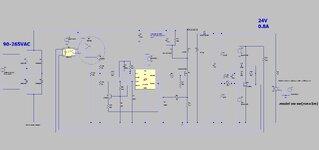cupoftea
Advanced Member level 6

Hi,
Why is it that the attached opto feedback loop circuit is not more common?
The delivery of the opto transistor current into the emitter of a PNP is seen as a very high impedance, and as such, the effect of the "nuisance" optocoupler pole is mostly cancelled out......meaning you can compensate more like you would if there were no opto isolation.
Much higher feedback loop crossovers are easily possible, and so therefore, much improved transient performance is easily delivered.
Also, the NPN amplifies the signal current such that much lower opto current is necessary, leaving you less vulnerable to degradation of opto CTR with age and temperature.
LTspice and jpeg as attached
Why is it that the attached opto feedback loop circuit is not more common?
The delivery of the opto transistor current into the emitter of a PNP is seen as a very high impedance, and as such, the effect of the "nuisance" optocoupler pole is mostly cancelled out......meaning you can compensate more like you would if there were no opto isolation.
Much higher feedback loop crossovers are easily possible, and so therefore, much improved transient performance is easily delivered.
Also, the NPN amplifies the signal current such that much lower opto current is necessary, leaving you less vulnerable to degradation of opto CTR with age and temperature.
LTspice and jpeg as attached

